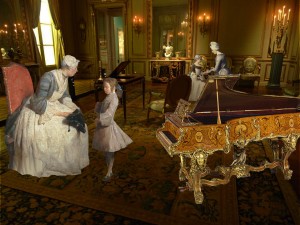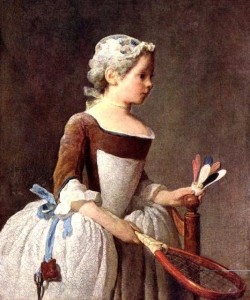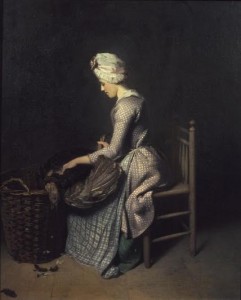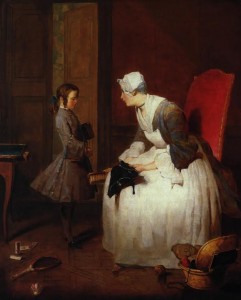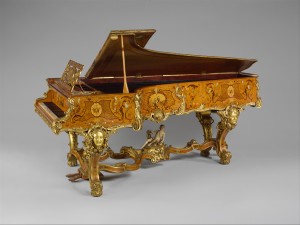Composite picture of the Metropolitan Museum of Art Tessé Room by Heather Nickels, showing how many servants would have been at work in such a room in the afternoon, and at what tasks: chiefly maids and governesses tending and educating children. For more on the piano, see our site’s section devoted to musical instruments: https://bt.barnard.edu/ave2015/project3/2015/03/31/musical-instruments/ or the Metropolitan Museum of Art’s online collection, here: http://www.metmuseum.org/toah/works-of-art/59.76.
There were many different types of servants employed in upper-class domestic homes; often, the roles taken on by domestics were strictly gendered. Female servants performed the roles of femmes de chambre (a chamber maid) or cooks. Male servants were given a higher status in the home, taking on the role of the “lackey.” These young males wore uniforms, called livery, and were given various tasks to perform in the household. Pictured in this image is a young male in livery, awaiting the performance of the young child of the master, who is being lectured by his governess. In the back of the room, another servant is dressing a young girl [1]
[1]Fairchilds, Cissie. “Masters and Servants in Eighteenth Century Toulouse.” JSTOR. JSTOR, 1979. Web. 18 Sept. 2015.
Characters Added to the Tessé Room:
Young Girl with Battledore and Shuttlecock
Jean-Baptiste-Simeon Chardin (1699-1779)
1740
Oil on canvas
Dimensions: 82 x 66 cm
Artist: Henry Walton 1746–1813
Title: Plucking the Turkey
Date: Exhibited 1776
Medium: Oil paint on canvas
Dimensions: Support: 762 x 635 mm, frame: 942 x 820 x 85 mm
Collection: Tate
Acquisition: Purchased 1912
Reference: N02870
The Governess, 1739
French, 1699 – 1779
oil on canvas
46.7 x 37.5 cm
Purchased 1956
National Gallery of Canada (no. 6432)
Objects Added to the Tessé Room:
